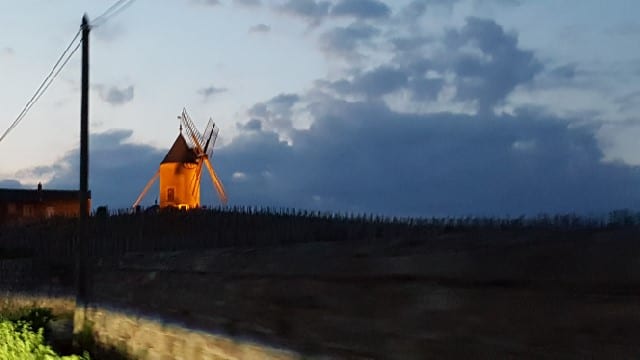A Windmill and Wine at Chateau Moulin-à-Vent
This story originally appeared in the Napa Valley Register.The sun was setting as we drove to our dinner at Chateau Moulin-à-Vent. It was my first time to Beaujolais, and as we turned up the road to our destination, we saw, sitting on the top of the hill in front of us, the iconic Moulin-à-Vent, or windmill.


The 500-year-old structure was breathtaking as the sky turned from a light yellow to a warm orange. After a few photos, we drove 650 feet farther and arrived at Chateau Moulin-à-Vent.
Moulin-à-Vent, located in the southernmost tip of Burgundy, is one of the 10 Crus of Beaujolais. Moulin-à-Vent borders the vineyards of Chenas to the north and Fleurie to the south.








